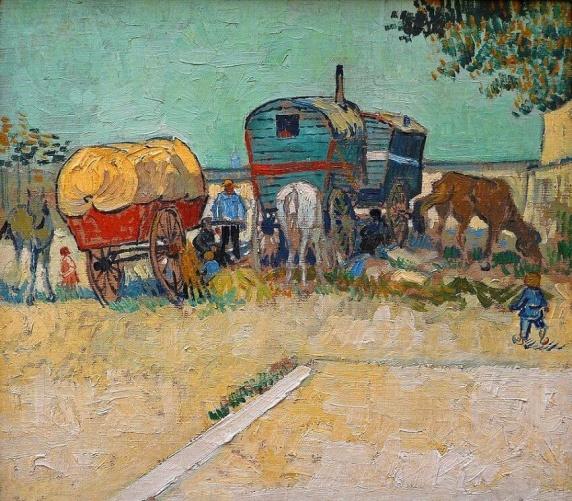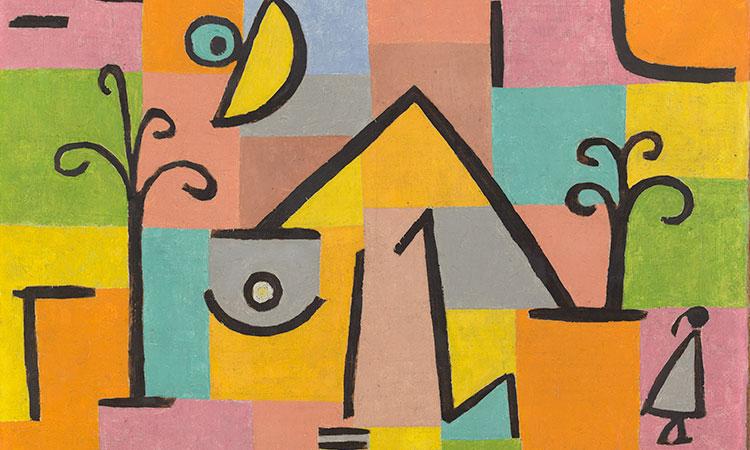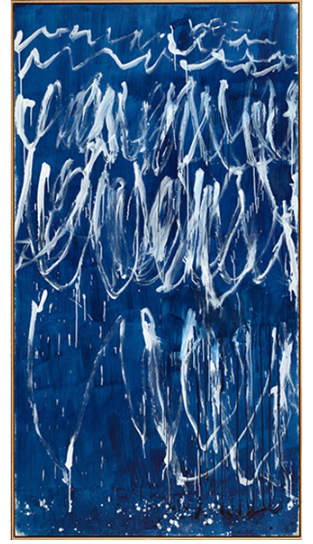The subject of figurativism and abstractionism is widely diverse in its representation and form. There are different trends within each, which could be represented in various artworks. In general, figurativism seeks to portray objects and people that exist in real life, taking them as a blueprint for the final artwork, whereas abstractionism goes beyond the physical. This post will present both trends at work.

In the Cafe by Edgar Degas is an example of a story painting. It was made in 1873, when France was ravaged by Absinthe addiction (Tolstoy, 2020). The somber tones, the blank stares, and the drinks on the tables are meant to represent the emotional state of a person after a terrible hangover.

Gypsy Camp Near Arlens by Vincent Van Gogh is an example of what could be called a nature painting. While the gypsies and their carts take center, they are not being seen as representation of an idea or a message (Tolstoy, 2020). The art simply depicts a place frozen in time, with no deeper meanings behind it.

Oriental Bliss is a piece of cubist abstract art that seeks to represent Paul Klee’s experiences in Tunisia, in particular, his fascination with hieroglyphs. Unlike with figurativism, the imagery here does not have any specific real prototypes, yet the message behind it can still be recognized (Tolstoy, 2020). In a way, it helps the viewer imagine their own perceptions of Tunisia based on the picture as a cornerstone.

Cy Twombly’s painting, on the other hand, shows an Avant-garde approach, which is often called pseudo-writing. It is a depiction of a raw emotion of creation, each picture different from the other, unique. It does not have any ties with any recognizable objects – the viewer can make of it what they will (Tolstoy, 2020). The four images presented demonstrate how vastly different the purposes and methods within the same genre could be.
Reference
Tolstoy, L. N. (2020). What is art and essays on art. New Your, NY: Read Books Ltd.